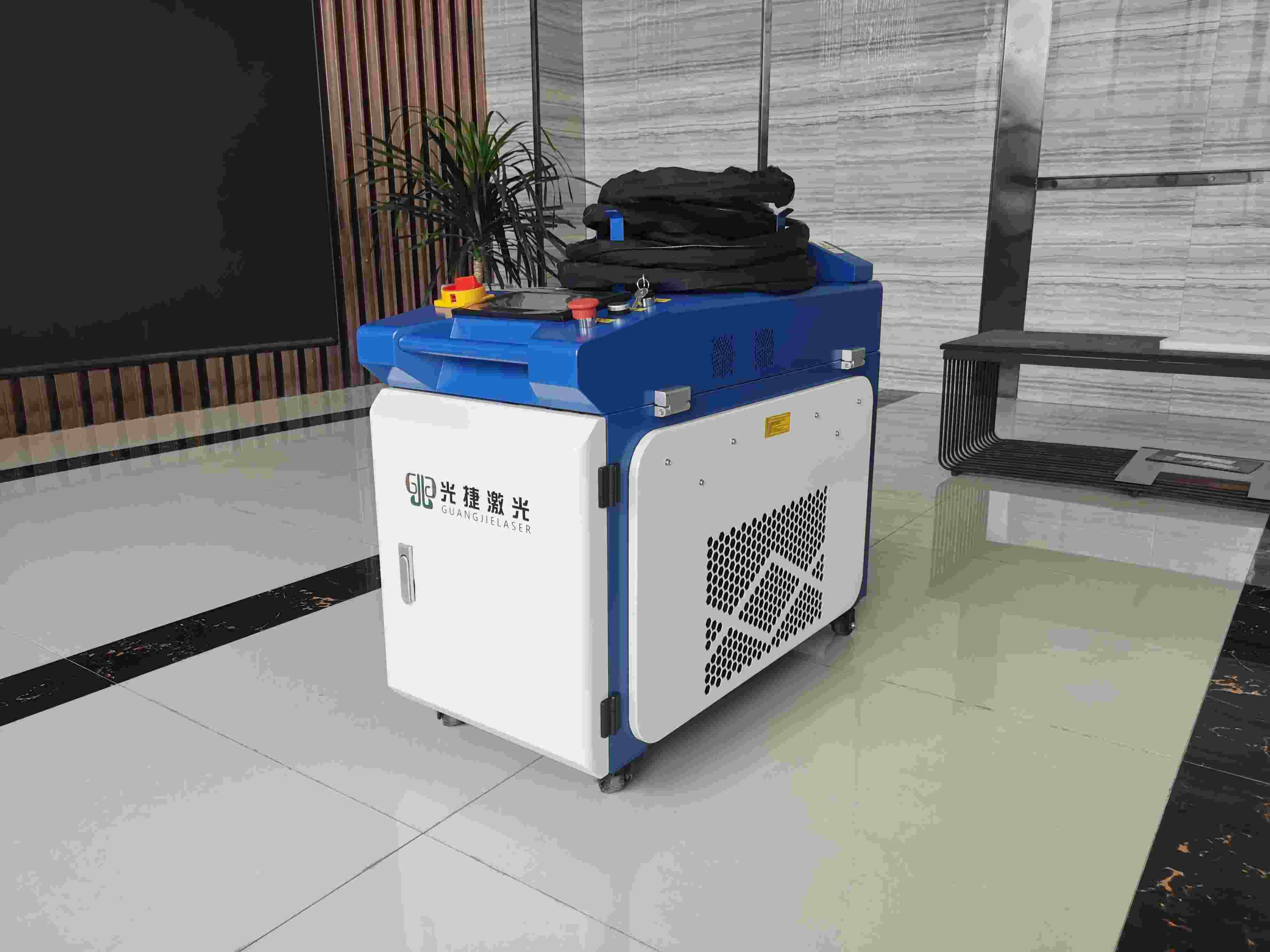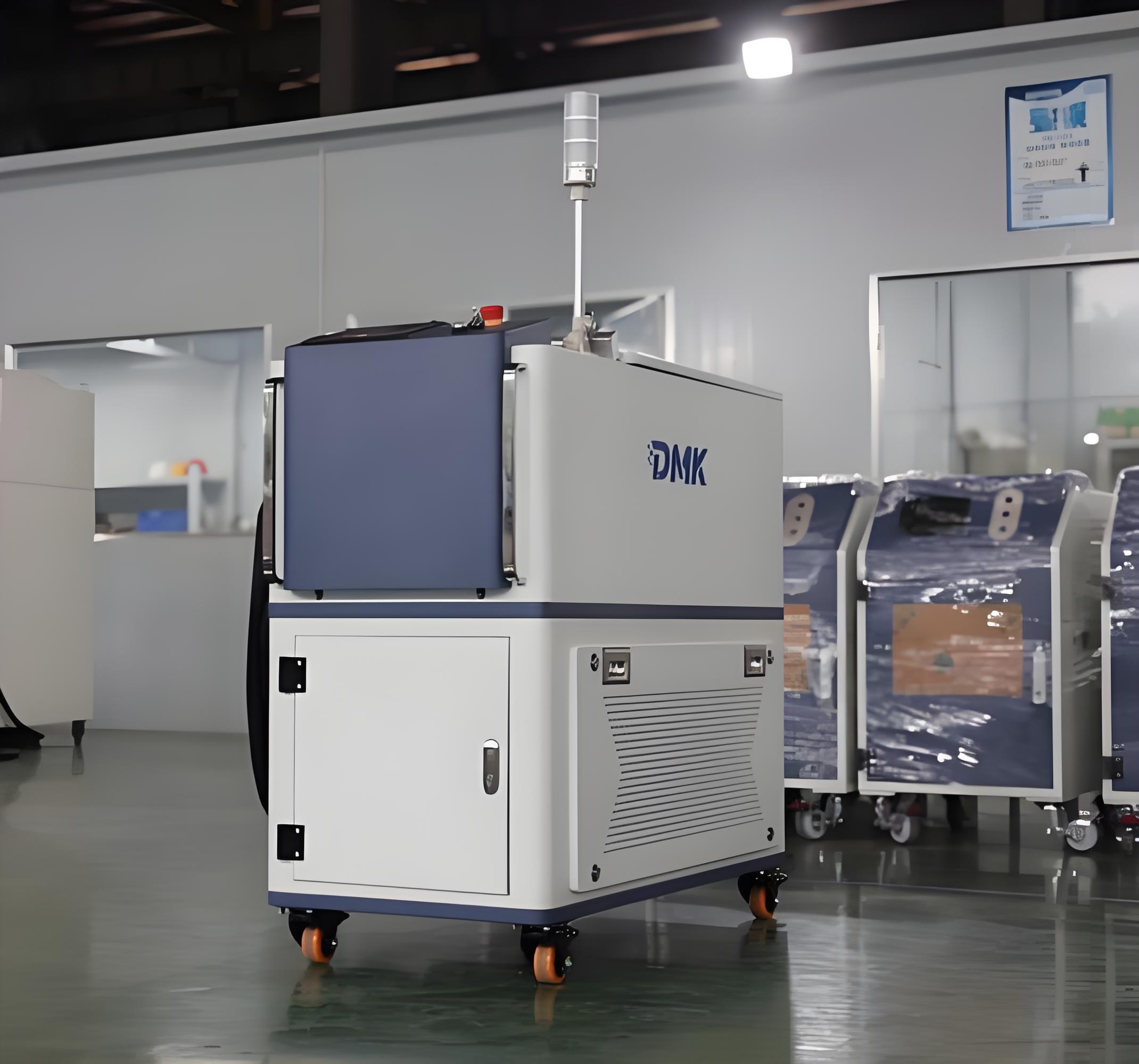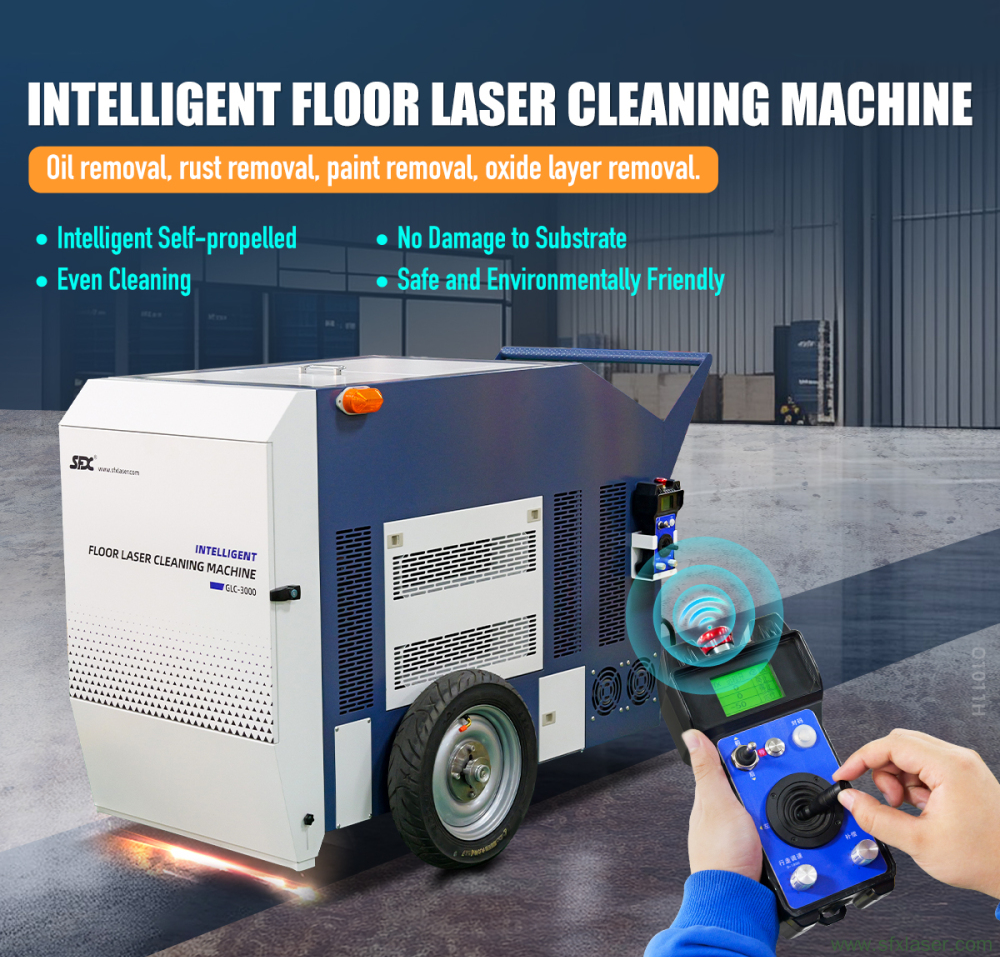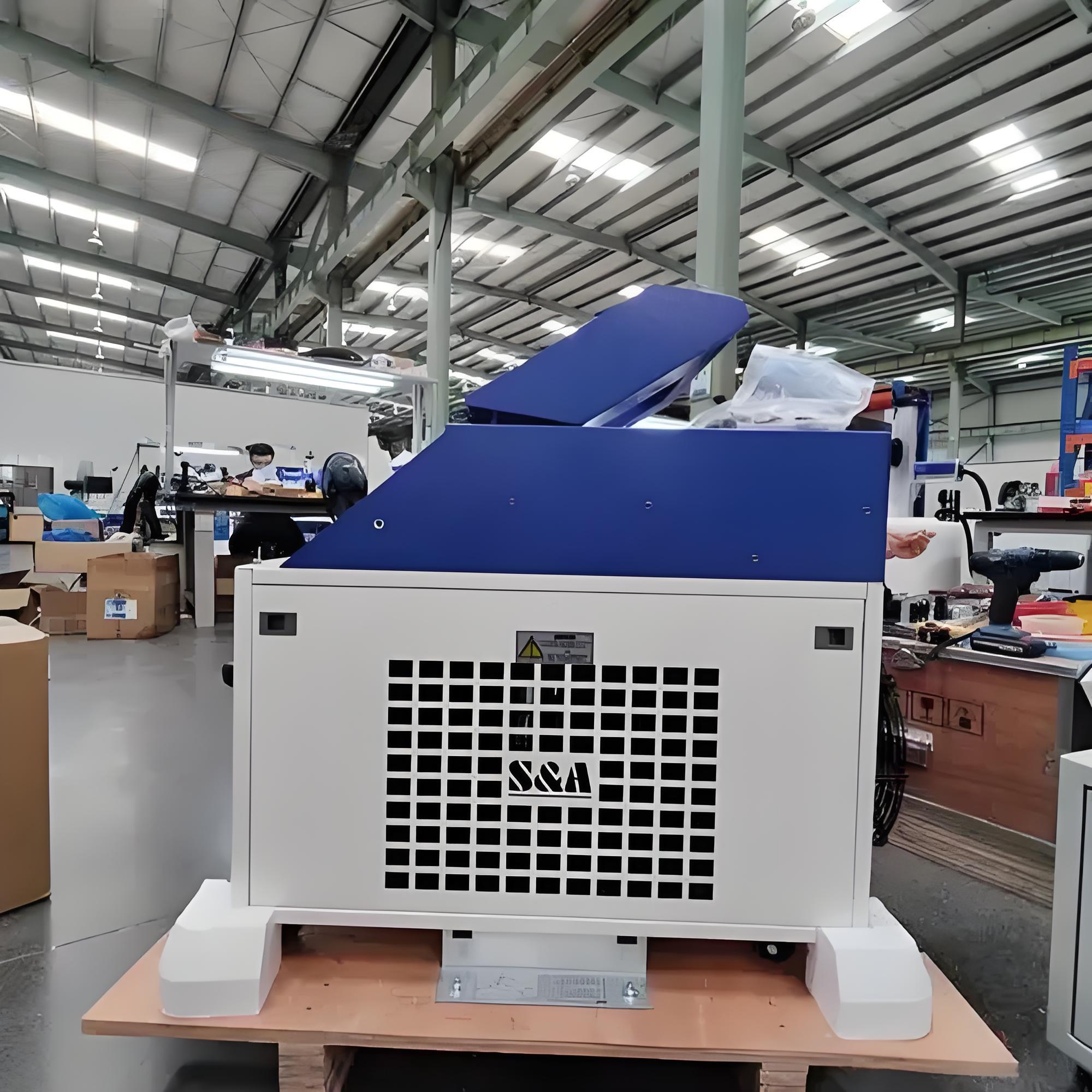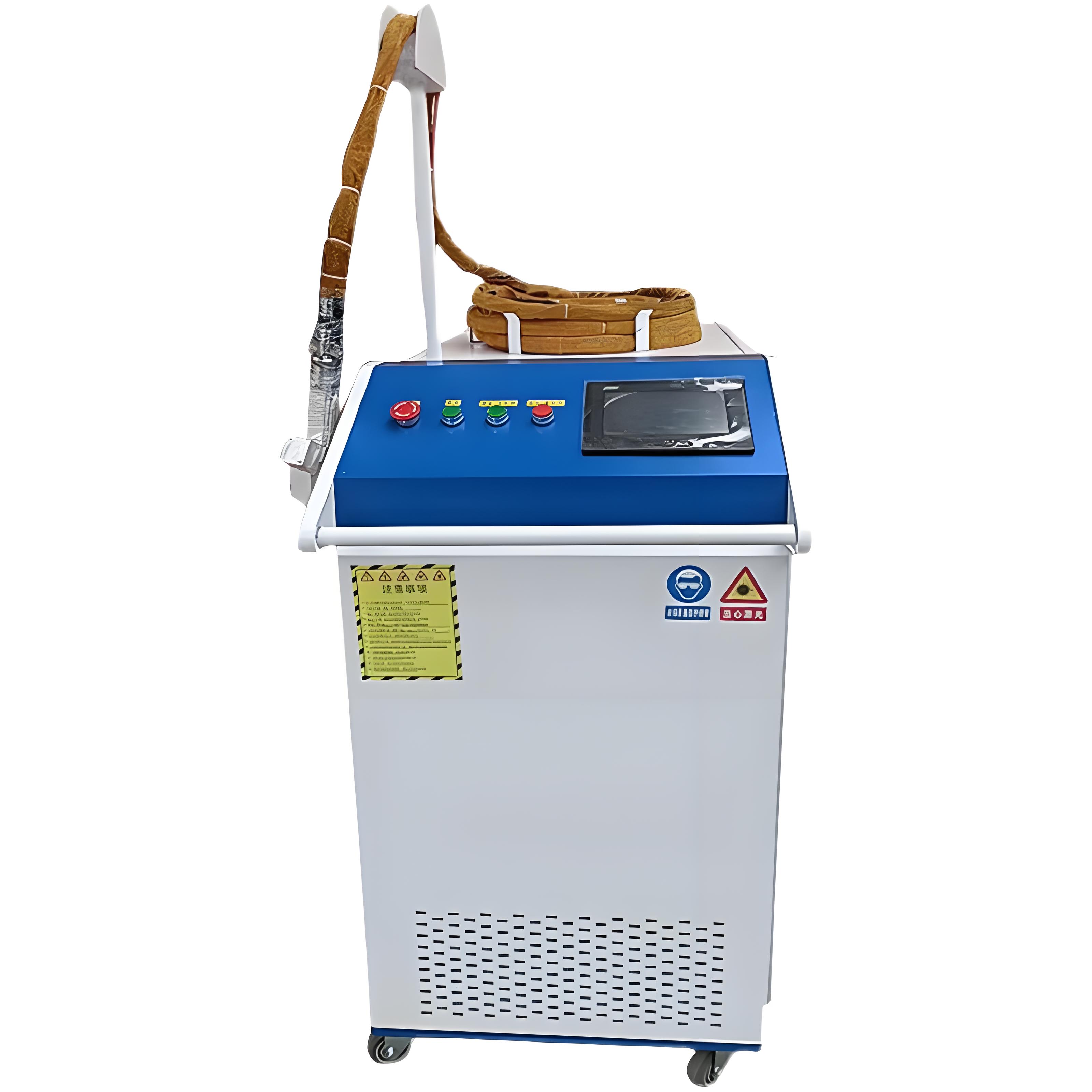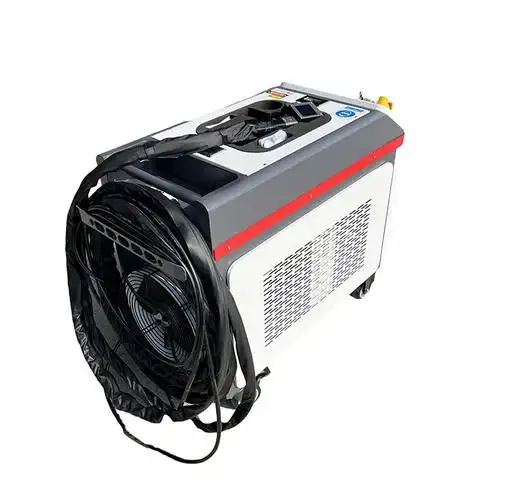Having spent over a decade working with industrial cleaning technologies, including laser rust removal machines, I’ve seen how transformative these tools can be for restoring metal surfaces. Their precision, speed, and eco-friendly nature make them a go-to for industries like automotive, aerospace, and manufacturing. But with great power comes great responsibility—laser rust removers are high-energy devices, and mishandling them can lead to serious risks like eye injuries, burns, or even fires. Safety is non-negotiable, and I’ve learned through experience that a well-prepared operator and a controlled environment are key to harnessing these machines effectively. This article will walk you through practical, field-tested safety measures to ensure you use a laser rust removal machine confidently and securely, whether in a workshop, factory, or home setting.
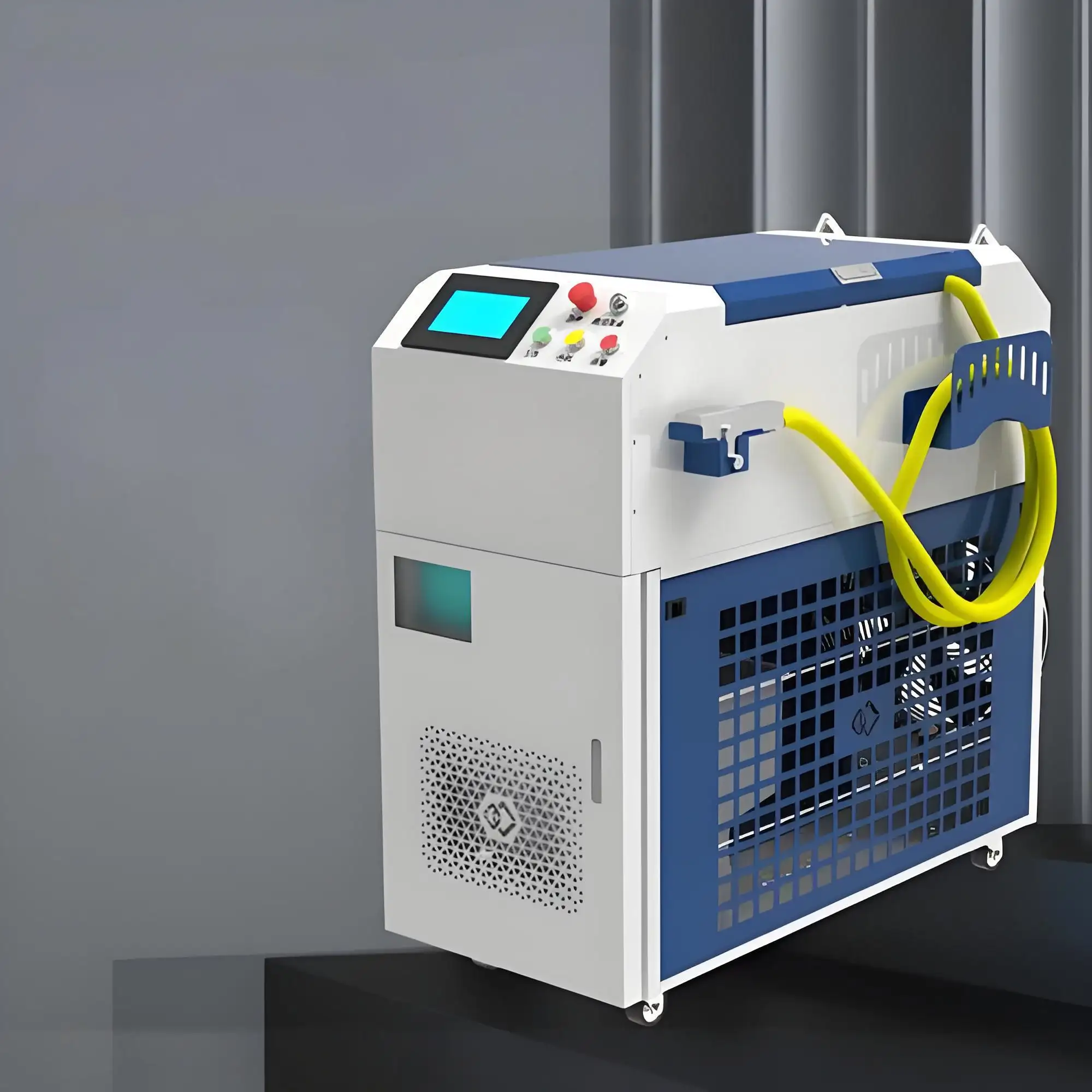
Why Safety Matters with Laser Rust Removal
Laser rust removal uses high-powered laser beams to vaporize rust and contaminants from metal surfaces through a process called laser ablation. The beam’s intensity, often ranging from 20W to 6,000W, generates extreme heat and light, posing risks to eyes, skin, and the surrounding environment. Unlike traditional methods like sandblasting or chemical treatments, lasers don’t involve flying debris or toxic substances, but they introduce unique hazards, such as optical radiation and fume emissions. Without proper precautions, operators can face injuries, equipment damage, or environmental violations.
My first encounter with a laser rust remover was in an automotive restoration shop. The machine was a game-changer, stripping rust from car parts in seconds. But I quickly realized that without strict safety protocols, its power could be as dangerous as it was impressive. From that experience, I’ve compiled a comprehensive guide to help you navigate the safety landscape, drawing on real-world lessons and industry standards.
Understanding the Risks
Before diving into safety measures, let’s break down the primary risks associated with laser rust removal machines:
Eye Damage: The laser beam emits intense light that can cause permanent retinal damage, even from reflections.
Skin Burns: Prolonged exposure to the laser or hot metal surfaces can result in burns.
Fumes and Dust: Vaporized rust and contaminants create airborne particles that can be harmful if inhaled.
Fire Hazards: The heat generated by the laser can ignite flammable materials if not managed properly.
Electrical Risks: High-powered lasers (often requiring 208–240V circuits) pose electrical hazards if not properly grounded.
These risks aren’t meant to scare you—they’re manageable with the right precautions. My goal is to equip you with practical steps to mitigate them, ensuring both safety and efficiency.
Essential Safety Measures for Laser Rust Removal
Here’s a detailed breakdown of how to protect yourself, your team, and your workspace when using a laser rust removal machine. These steps are grounded in my years of experience and align with international safety standards like ANSI Z136 and IEC 60825-1.
1. Wear Appropriate Personal Protective Equipment (PPE)
The first line of defense is always PPE. Laser rust removers emit optical radiation that can harm eyes and skin, so proper gear is critical.
Laser Safety Glasses: Always wear laser-specific safety glasses rated for the wavelength of your machine (typically 1064 nm for fiber lasers). These glasses filter out harmful light while allowing clear vision. For example, I once worked with a 1,000W handheld laser without proper glasses, and a stray reflection caused temporary eye discomfort—lesson learned.
Heat-Resistant Gloves: Use gloves to protect against burns from hot metal surfaces or accidental laser exposure. Leather or Kevlar gloves are ideal for handling heated parts.
Long-Sleeve Clothing: Cover exposed skin with flame-resistant clothing to minimize burn risks.
Respiratory Protection: If your machine lacks a fume extraction system, wear a respirator (e.g., N95 or P100) to avoid inhaling vaporized particles.
For Class-1 enclosed systems, PPE requirements may be minimal, as the enclosure contains the beam. However, Class-4 handheld devices often require full PPE due to their open-beam design.

2. Set Up a Safe Work Environment
A controlled workspace is crucial for safe operation. Here’s how to prepare your area:
Clear Flammable Materials: Remove rags, solvents, or aerosols from the work area to prevent fires. I’ve seen a near-miss where a forgotten paint can ignited during a laser cleaning session.
Contain the Beam: Use laser curtains, shields, or walls to prevent stray beams from escaping. Reflective surfaces like mirrors or polished metal should be covered or removed to avoid unintended reflections.
Ensure Proper Ventilation: Laser cleaning produces fumes and dust that must be managed. Install a fume extraction system with a HEPA filter to capture airborne particles. Most modern machines, like those from Laserax or KEYENCE, offer integrated extraction systems.
Post Warning Signs: Clearly mark the laser operation area with signs indicating “Laser in Use” and “Eye Protection Required” to alert others. This is especially important in shared workspaces.
Ground Electrical Equipment: Ensure the machine is properly grounded to avoid electrical shocks, especially for high-powered units drawing 40–100 amps.
3. Understand Your Machine’s Specifications
Every laser rust removal machine is different, and knowing its specs is vital for safe operation. Before using your device:
Read the Manual: The user manual provides critical details on power settings, wavelength, and safety features. For example, a 6000W laser requires different precautions than a 50W unit.
Check Power Levels: Higher-powered lasers (e.g., 1,500W–6,000W) clean faster but demand stricter safety measures. Adjust settings to stay just above the ablation threshold of rust but below that of the base metal to avoid damage.
Verify Safety Features: Modern machines often include real-time monitoring, automatic shut-off, and beam containment systems. Familiarize yourself with these to reduce risks.
I once worked with a team that skipped the manual for a new 2,000W laser. They set the power too high, damaging a delicate aluminum part. A quick read-through could have saved them hours of rework.
4. Get Proper Training
Training is non-negotiable. As someone who’s trained dozens of operators, I can’t stress this enough: never operate a laser rust remover without formal training. Manufacturers like LaserCleaner and Adapt Laser often provide safety training with purchase, covering:
Machine Operation: How to adjust settings, start/stop the laser, and troubleshoot issues.
Safety Protocols: Proper use of PPE, workspace setup, and emergency procedures.
Maintenance: Cleaning lenses, checking cooling systems, and storing the machine safely.
If training isn’t included, seek courses from organizations like the Laser Institute of America or consult the manufacturer.
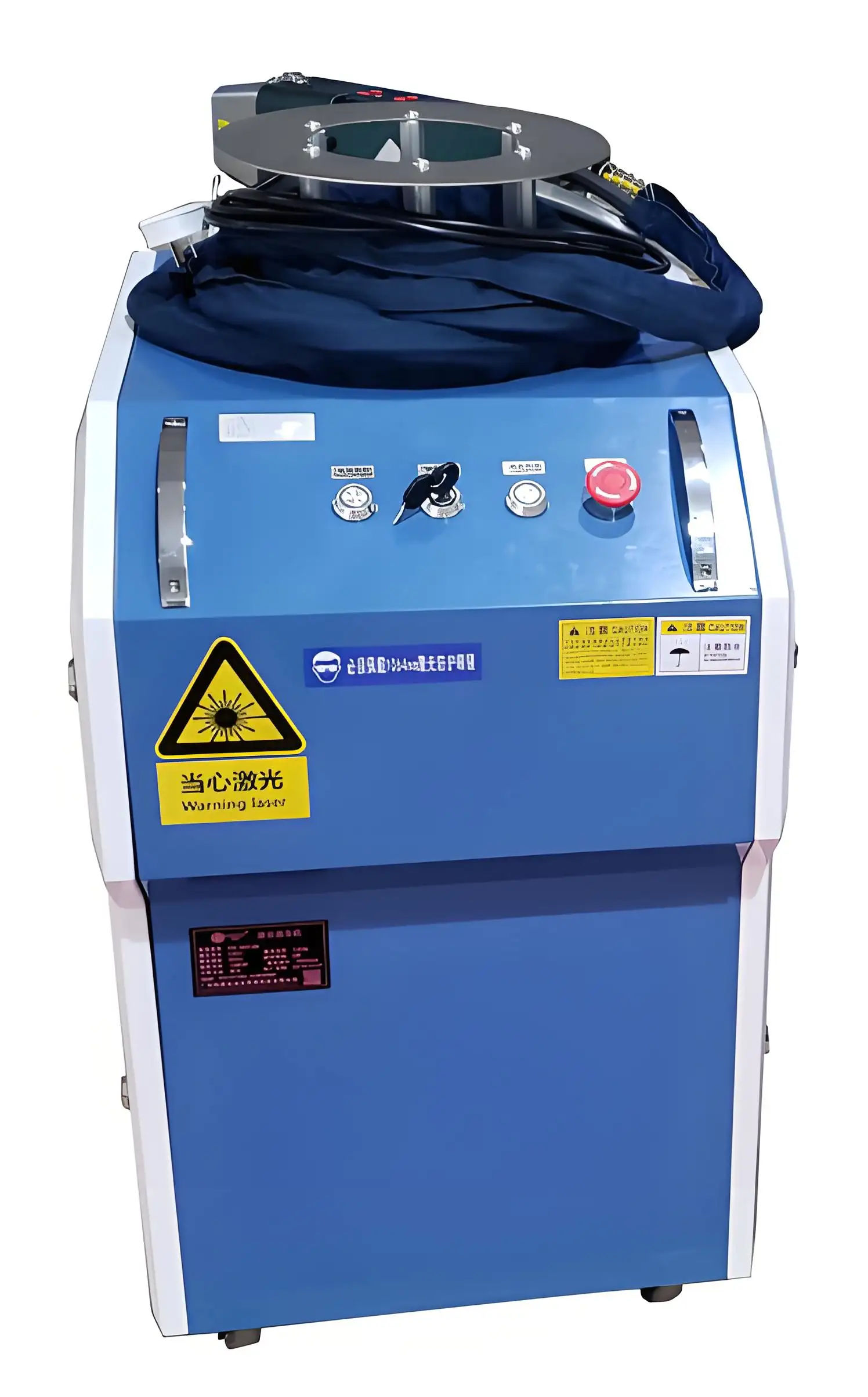
5. Use Fume Extraction Systems
Laser rust removal vaporizes rust into fumes and dust, which can be hazardous if inhaled. A fume extraction system is essential, especially for indoor use. Here’s why:
Health Protection: Fumes may contain metal oxides or other toxins. A HEPA-filtered extractor removes these particles before they reach your lungs.
Environmental Compliance: Releasing unfiltered fumes may violate regulations like OSHA or EPA standards.
Equipment Longevity: Dust buildup can damage the laser’s lens or internal components.
Many machines, like the xTool portable laser, come with built-in exhaust systems that connect to air purifiers, ensuring clean air output. In one shop I worked in, we neglected the extractor’s filter maintenance, and the air quality dropped noticeably—don’t make that mistake.
6. Follow Proper Startup and Shutdown Procedures
Starting and stopping a laser rust remover isn’t like flipping a light switch. Follow these steps:
Startup:
Inspect the machine for damage, especially the focus lens and cables.
Verify that the cooling system (water or air) is operational, as overheating can cause malfunctions.
Set parameters (power, speed, pulse frequency) based on the material and rust thickness.
Shutdown:
Power down in the sequence outlined in the manual.
Allow the cooling system to run for a few minutes to dissipate residual heat.
Disconnect power and store the machine in a secure, dry location.
I’ve seen operators rush shutdowns, leading to lens damage from trapped heat. Take your time—it’s worth it.
7. Comply with Safety Standards
Laser rust removers are governed by standards like ANSI Z136 (USA), EN 60825 (Europe), and IEC 60825-1 (international). These outline requirements for:
PPE and Signage: Ensuring visibility and protection.
Machine Design: Class-1 enclosures or Class-4 handheld devices must meet specific safety criteria.
Workplace Audits: Regular inspections by OSHA, ISO, or local regulators.
Check your machine’s compliance certification and keep records for audits. Non-compliance can lead to fines or shutdowns.
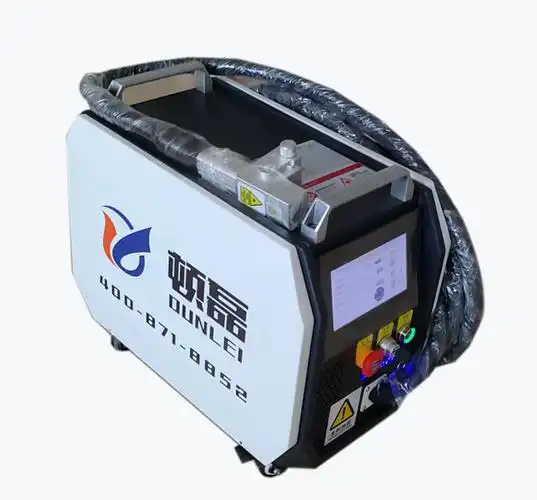
8. Monitor and Maintain the Machine
Regular maintenance prevents accidents and extends equipment life. Key tasks include:
Clean the Focus Lens: Use a lens cleaning solution to remove dust or residue, which can scatter the beam and reduce efficiency.
Check Cooling Systems: Ensure water or air coolers are functioning to prevent overheating.
Inspect Cables and Connections: Look for wear or exposed wires to avoid electrical hazards.
Monitor Software: Use real-time diagnostics (if available) to track performance and detect issues like overheating or misalignment.
In one factory, we extended a 1,000W laser’s lifespan by two years simply by following a strict maintenance schedule.
Safety Checklist for Laser Rust Removal
To make things easier, here’s a concise checklist I use before every laser rust removal session:
|
Step |
Action |
Why It Matters |
Frequency |
|---|---|---|---|
|
Wear PPE |
Use laser safety glasses, gloves, and long sleeves |
Protects against eye and skin injuries |
Every use |
|
Clear Work Area |
Remove flammable materials and cover reflective surfaces |
Prevents fires and stray beam reflections |
Before each session |
|
Set Up Fume Extraction |
Ensure extractor is operational with clean filters |
Removes harmful fumes and ensures compliance |
Before each session |
|
Check Machine Settings |
Verify power, speed, and pulse settings match material and rust thickness |
Avoids damage to material or machine |
Before each session |
|
Inspect Equipment |
Check lens, cables, and cooling system for damage or wear |
Prevents malfunctions and extends machine life |
Daily or per manual |
This table has saved me countless headaches, ensuring no step is overlooked during setup.
Real-World Safety Lessons
Let me share a story from my time at a shipbuilding facility. We were using a 2,000W handheld laser to clean rust from steel plates. The operator, new to the machine, didn’t wear proper safety glasses, assuming the handheld unit’s low power was “safe enough.” A reflection off the steel caused temporary vision blurriness, and he was sidelined for days. We immediately implemented mandatory training and PPE checks, and since then, we’ve had zero incidents. This reinforced the importance of never cutting corners on safety, no matter how experienced you feel.
Another time, in an automotive shop, we neglected to clear flammable rags from the work area. A stray spark from a nearby welding station (not the laser) ignited a rag, causing a small fire. Luckily, we had a fire extinguisher nearby, but it was a wake-up call to keep the workspace pristine.

Benefits of Safe Laser Rust Removal
When safety is prioritized, laser rust removal offers unmatched advantages:
Precision: Removes rust without damaging the base metal, unlike sandblasting.
Eco-Friendly: No chemicals or consumables, reducing environmental impact.
Efficiency: Cleans rust in seconds to minutes, compared to hours for manual methods.
Operator Safety: With proper precautions, it’s safer than chemical or abrasive methods, which involve toxic substances or flying debris.
Challenges and How to Overcome Them
Despite its benefits, laser rust removal has challenges that require careful management:
High Initial Cost: Machines range from $1,799 for portable units to $480,000 for industrial models. Start with a lower-powered unit (e.g., 50W–200W) for small-scale needs and scale up as budget allows.
Learning Curve: Operators may struggle with settings or maintenance. Invest in training and practice on scrap metal to build confidence.
Surface Sensitivity: Improper settings can cause surface roughness. Test settings on a small area first to ensure the beam is calibrated correctly.
Choosing the Right Laser Rust Removal Machine
The safety features of your machine can make or break its usability. Here’s a quick guide to selecting a safe model:
Class-1 Enclosed Systems: Ideal for industrial settings, requiring minimal PPE due to beam containment. Brands like Laserax and KEYENCE offer these.
Class-4 Handheld Units: Portable but riskier, requiring full PPE. The xTool portable laser is a great option for small businesses or DIY users.
Power Range: Choose 50W–200W for light rust or small parts, or 1,000W–6,000W for heavy-duty applications like shipbuilding.
Safety Features: Look for automatic shut-off, real-time monitoring, and integrated fume extraction to enhance safety.
Final Thoughts
Laser rust removal is a revolutionary tool that can transform how you handle rust, but it demands respect and preparation. By wearing proper PPE, setting up a safe workspace, understanding your machine, and following strict protocols, you can harness its power without risking injury or damage. My years in the field have taught me that safety isn’t just a checklist—it’s a mindset. Whether you’re restoring a vintage car, maintaining industrial equipment, or tackling a DIY project, these precautions will keep you and your team safe while maximizing the machine’s potential. Stay vigilant, and let the laser do the heavy lifting.

Related Questions and Answers
Q: Do I need special training to use a laser rust removal machine?
A: Yes, training is essential. It covers safe operation, setting adjustments, and emergency procedures. Many manufacturers offer training with purchase, or you can seek courses from organizations like the Laser Institute of America.
Q: Can I use a laser rust remover indoors without ventilation?
A: No, you need a fume extraction system to remove harmful dust and fumes. Indoor use without ventilation risks health issues and regulatory violations.
Q: Are handheld laser rust removers safe for home use?
A: Yes, if used correctly. Always wear laser safety glasses, use a fume extractor, and follow the manual. Handheld units (e.g., xTool) are great for DIY but require strict adherence to safety protocols.
Q: What happens if I use the wrong settings on my laser machine?
A: Incorrect settings can damage the metal surface, cause roughness, or even pose safety risks like burns. Always test on a small area and adjust power and speed to match the rust thickness and material.

